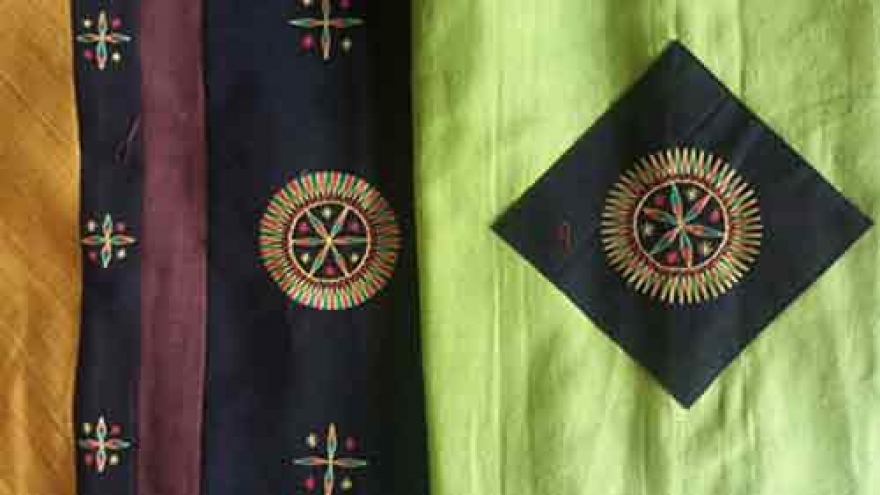Indigo hue, the soul of Dao attire
It often takes a month for a Dao ethnic woman to dye a piece of fabric and two to three years to make a full set of clothes. Though the process is time-consuming, Dao women in Van Ho commune, Son La province, continue to meticulously craft their intricate costumes in order to preserve their identity.

To prepare for her son’s coming-of-age ceremony, Mrs. Dang Thi Hoa began sewing his outfit three years in advance. Coming-of-age is one of the Dao’s most important rituals, marking a boy’s adulthood. At the ceremony, the young man wears new clothes embroidered with elaborate and colorful patterns.
On the indigo fabric, Mrs. Hoa skillfully embroidered red and white motifs depicting plants, flowers, and animals familiar in Dao life. She also adorned the costume with silver coins as symbols of good fortune. Her son would wear this special outfit only once in his lifetime.
“We cannot abandon Dao traditions. Women must learn to embroider. Before making a skirt or a blouse, I have to dye indigo fabric. This blouse for my son’s coming-of-age ceremony took me three years to finish. It’s completely different from daily clothes. The patterns must be embroidered exactly as our ancestors did. We can’t change them because they represent our ethnic identity,” said Mrs. Hoa.

The Dao believe that the garments must carry the scent of indigo. So, despite the hard work, they persist in following the traditional dyeing process to preserve the authentic color and scent. Although they no longer grow cotton plants or weave, they still practice indigo dyeing.
The indigo plants are grown in the forest or in home gardens. Dao women soak the indigo leaves with woodstove ash for four or five days to extract the resin. When the leaves decompose, they add lime and begin dyeing. Another method is to boil the leaves. The fabric is sun-dried and repeatedly dyed until it reaches the desired shade. Because the fabric absorbs multiple layers of indigo, it retains warmth well, which is practical for the cool climate of Van Ho.
“In the past, our ancestors would dye a piece of fabric for about a month to make a blouse, a scarf, or a skirt before embroidering. New items are for weddings or important events. It’s our custom to embroider only on indigo garments,” Mrs. Hoa said.
Dao girls start learning embroidery from their mothers at the age of 10. They make their own clothes for their wedding. After marriage, Dao women make clothes for their family members. In their old age, they prepare a set of clothes to wear after they pass away. Since their eyesight has weakened, this set of clothes has only simple embroidered patterns. The Dao believe the indigo scent on their clothes will help their ancestors recognize them in the afterlife.
“When my eyesight was good, I embroidered fine clothes for my children. Now that I’m old and can’t see well, I’m making garments for myself when I pass away. I don’t need beautiful decorations anymore. If I wanted them pretty, I’d embroider birds and dogs,” Mrs. Dang Thi Vinh said.
Birds and dogs are among the basic motifs on Dao costumes. They embroider images of dogs, sheep, and monkeys on blouses, while birds and red tassels with blue beads decorate scarves. Wax is used to draw patterns on skirts.
Dao women work in the fields during the day and embroider only after finishing their farm chores. Though their hands are roughened by hard work, they skillfully create the distinctive red, white, yellow, and blue designs of Dao attire.
In the past, Dao people wore their traditional costumes daily. Now they’re reserved for special occasions.
“These patterns reflect our group’s identity. Now we only wear them during ceremonies or cultural performances. Older women still wear their skirts daily, but young people rarely do. As women, we must demonstrate our skill in housework and embroidery,” Ms. Ly Thi Anh said.
Every stitch, motif, and indigo hue of a Dao garment represents the hard work of a Dao women and her love for her family, village, and people. In today’s modern world, traditional Dao costumes remain a source of pride and a symbol of Dao women’s grace and artistry.




